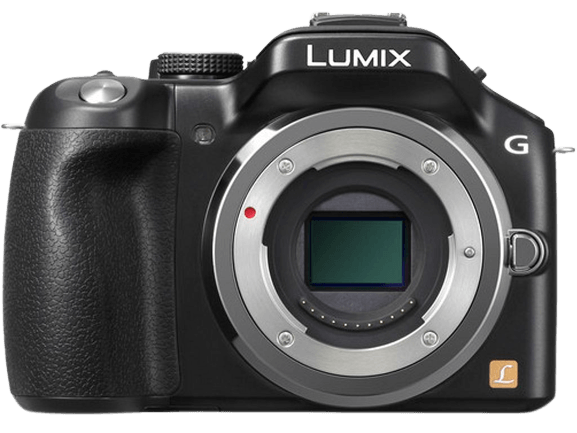Panasonic Lumix DMC G5 Specs and Scores

The Panasonic Lumix DMC G5 receives a 47/100 score in our evaluation, which reflects its general specifications. Launched in 2012 with a price of $650, this mirrorless camera measures 120 x 83 x 71mm and weighs 396g (0.87lbs). Considering these specifications, the G5 is a relatively compact and lightweight option for photography enthusiasts.
However, in today’s market, the G5’s specifications might not be as competitive as newer models. Despite its compact size and decent score, there are more advanced options available for photographers looking for better performance and features.
Panasonic Lumix DMC G5 Overview and Optics
The Panasonic Lumix DMC G5 receives an optics score of 46/100. This camera features 16.05 megapixels, a shooting speed of 6 frames per second, and a CMOS sensor. It utilizes the Venus Engine VII FHD processor and has a DXOMARK sensor score of 61. The sensor size is Micro Four Thirds, and the lens mount is Micro 4/3. However, it lacks image stabilization and has an aspect ratio of 4:3.
With these specifications, the Lumix DMC G5 falls short in comparison to other cameras in today’s market. Many competing cameras offer higher megapixels, improved shooting speed, and better sensor technology. Additionally, the absence of image stabilization puts the G5 at a disadvantage, as this feature is now standard in many cameras.
The optics of the Panasonic Lumix DMC G5 are not on par with current market offerings. Its lower score reflects its limitations in comparison to more advanced cameras available today.
Panasonic Lumix DMC G5 Video Performance
The Panasonic Lumix DMC G5 scores 56/100 in the video category. It offers Full HD video resolution with maximum dimensions of 1920 x 1080 pixels. The camera also supports a maximum video frame rate of 60fps, ensuring smooth and clear motion capture in high-quality video recordings.
Compared to other cameras in today’s market, the Lumix G5’s video capabilities are not the most advanced, as 4K video resolution has become more prevalent in recent years. However, the Full HD resolution still provides satisfactory results for casual videographers and enthusiasts who are not focused on professional-level video production.
The Lumix G5 lacks built-in time-lapse functionality, which is a popular feature in many modern cameras. This absence may be a disadvantage for some users seeking creative and dynamic video possibilities. Despite these limitations, the Panasonic Lumix DMC G5’s video capabilities remain adequate for everyday use and entry-level videography pursuits.
Panasonic Lumix DMC G5 Features and Benefits
The Panasonic Lumix DMC G5’s features score stands at 54 out of 100. With a 3-inch touchscreen and a resolution of 920,000 dots, the camera offers a decent display experience. The flip screen adds versatility for various shooting angles, but the absence of GPS, Wi-Fi, and Bluetooth connectivity limits its potential for sharing and geotagging photos.
Considering today’s market, the G5’s features are somewhat lacking compared to newer models. Connectivity options are essential for many photographers, and the lack of these features may disappoint those who prioritize convenience and seamless photo sharing.
The G5’s feature set may not be the most advanced or comprehensive, but it still provides a functional and user-friendly experience for those who can overlook the missing connectivity options.
Panasonic Lumix DMC G5 Storage and Battery
The Panasonic Lumix DMC G5’s storage and battery score is 21/100. The camera has one memory card slot, which accepts SD, SDHC, and SDXC cards. This is a standard feature in today’s market, allowing for easy storage and transfer of photos and videos.
The battery life of the Lumix DMC G5 is 320 shots, powered by a DMW-BLC12 battery. This battery life is on the lower end compared to other cameras in the market, which may require more frequent charging or carrying spare batteries. Additionally, the camera does not support USB charging, making it less convenient for on-the-go users.
Taking these specifications into account, the Lumix DMC G5’s storage and battery performance is not particularly impressive. Users may need to consider these limitations when deciding if this camera meets their needs.
